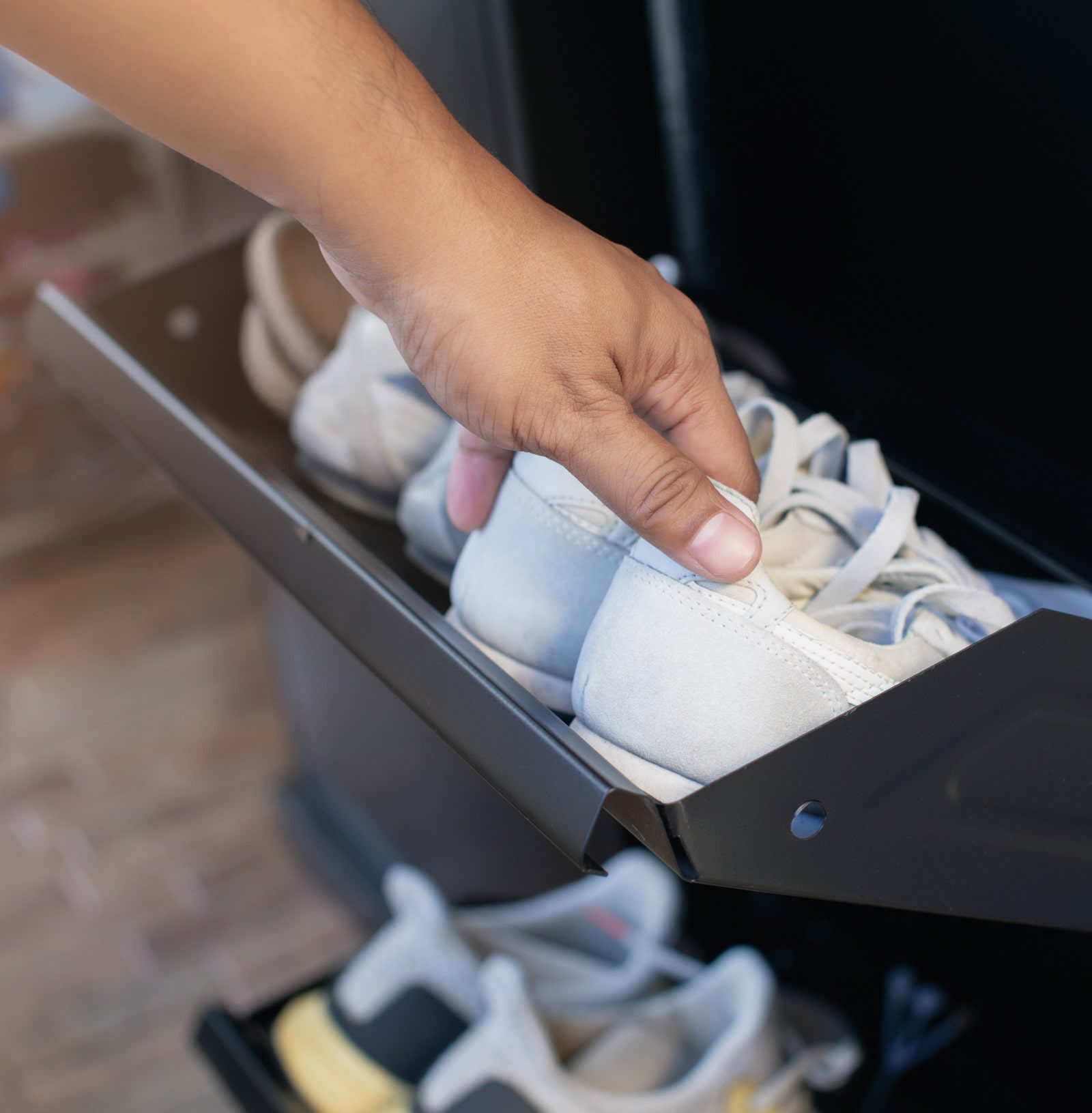Footwear care guide.
How to maintain your footwear and prolong its life.
Once you have your new footwear, it’s important to take care of it. Treat your footwear like you’d treat a car – it needs regular maintenance to keep it in the best shape. The better the condition, the better it works!
To note, most brands will have their own set of care instructions. If these are available, you should follow them as they will be specific to the materials used to construct the footwear.
General care tips.
Our recommended care instructions for all brands and types of footwear.
Shoe horns.
Use a shoe horn to help put your shoes on without struggling. Not only does it make your life easier, it prevents you from damaging the back of the footwear. Trying to force your foot into a shoe could damage the heel counter, or break it entirely.
Moisture.
Moisture encourages the growth of bacteria and mould. If your shoes become wet, damp, or moist, remove the insoles and let them air out naturally. Footwear can sometimes take up to 3 days to fully dry, but it will help keep them fresh. Avoid using direct heat sources, as you could damage the materials.
Socks.
The type of socks you use can affect your footwear. Simple fabrics are the most affordable, but they can also make your feet prone to sweating - leading to excessive bacteria growth. A simple change to performance socks, such as silver-lined socks, can be beneficial during all seasons. The lining can trap heat during winter, and keep your feet at body temperature during summer.

Cleaning your footwear.
Washing machine.
As mentioned earlier, footwear brands have different manufacturing methods, as well as material preferences. For this reason, there may be delicate parts of your footwear that are not meant to be submerged completely in water.
The washing machine is therefore bad practice in our opinion, even on a gentle cycle. What’s more is that if your shoes do come out without breaking apart, the shape may become distorted, which will have a direct impact on your feet.
General cleaning methods
For the majority of footwear, the safest way to clean it is to wipe off any dry dirt and grime with a soft horsehair brush. Be gentle, and take extra precautions with delicate materials like suede.
Once you are left with just the dried stains, take a damp cloth and wipe them. You can use cleaning solutions, but make sure that they are suitable for delicate surfaces and will not react with the material.
After cleaning, allow the footwear to dry naturally. Avoid using any heat sources, as it will damage the material and distort the shape.
Storing your footwear.
How you store your footwear will obviously depend on your personal living situations, but there are things that should be considered when putting your footwear away.
- Try to avoid storing footwear in basements, attics, garages, or any other place that gets overly cold in the winter and hot in the summer. The materials will break down a lot quicker under these conditions.
- The original shoebox is a great option for long-term storage, as it will keep the footwear protected whilst allowing good air circulation. Without good airflow, shoes will become damp, mouldy, and they’ll break down quicker.
- Use shoe-trees, or pad the footwear out with paper to help them maintain their shape throughout long periods of storage.
- A good practice to get into would be to spray the inside of your footwear with deodorising spray, in order to remove any unwanted bacteria – especially during the warmer season.



